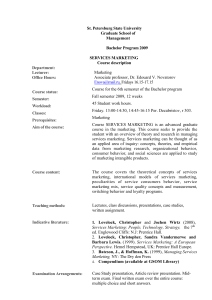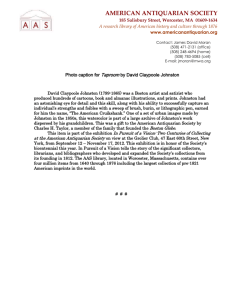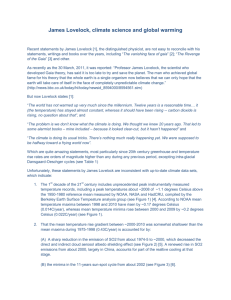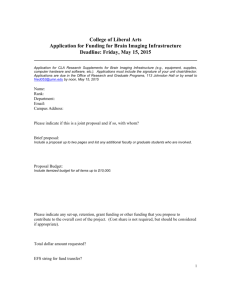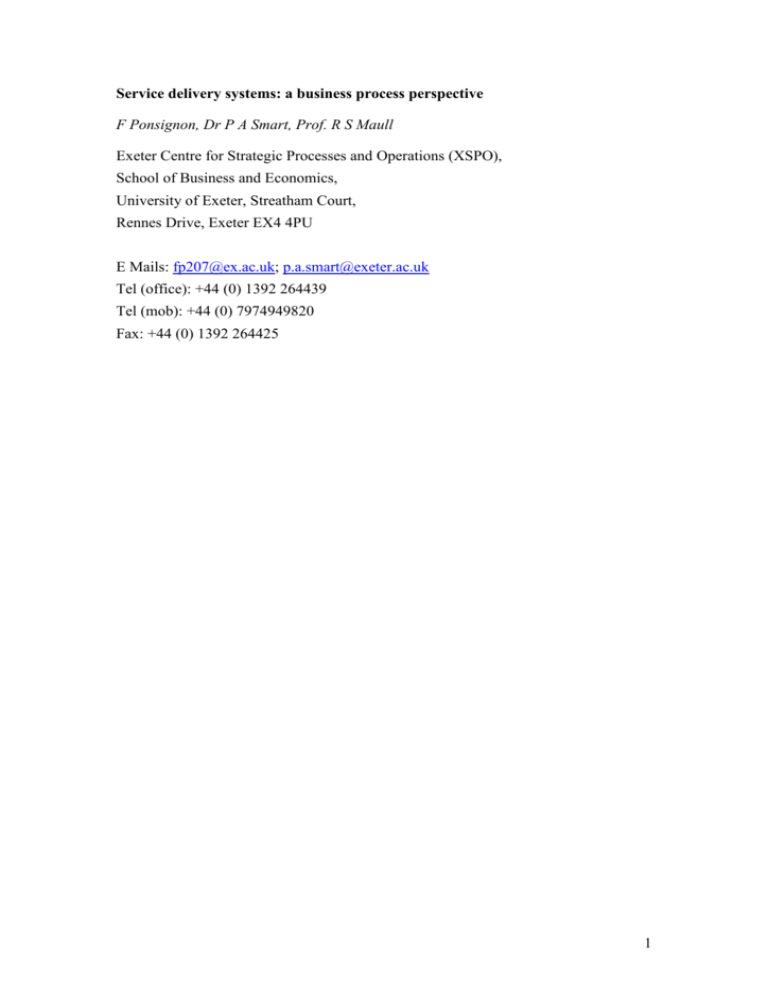
Service delivery systems: a business process perspective
F Ponsignon, Dr P A Smart, Prof. R S Maull
Exeter Centre for Strategic Processes and Operations (XSPO),
School of Business and Economics,
University of Exeter, Streatham Court,
Rennes Drive, Exeter EX4 4PU
E Mails: fp207@ex.ac.uk; p.a.smart@exeter.ac.uk
Tel (office): +44 (0) 1392 264439
Tel (mob): +44 (0) 7974949820
Fax: +44 (0) 1392 264425
1
Abstract
Although services now account for between 60 and 80% of GDP and employment in
many modern economies and despite a growing evidence of servicization in those
economies (Bettley et al., 2005; Cook et al., 2006; Howells, 2004; Wise &
Baumgartner, 1999), where manufacturers attempt to increase revenues and the
bottom line by integrating service activities and/or components into their traditional
product offering, service operations management research remains worryingly meagre
(Machuca et al., 2007; Roth & Menor, 2003; Slack et al., 2004b).
This paper suggests that many of the extant frameworks found within the Services
literature require re-appraisal to ensure their relevance and utility in a radically
changing business landscape. Engaging a ‘synthetic’ mode of thinking, approaching
inquiry from a General Systems Theory perspective, in pursuit of middle-range
theory, the paper suggests a new framework for future research. This framework,
drawing on recent developments such as UST, suggests that research is needed to
address the process configurations of service delivery systems. In particular the
correlation of ‘customer input’ type with ‘transformation type’, categorised by
material, information, and customer, is suggested. This potentially provides
archetypical forms of service delivery systems which are more closely aligned to
organisational practice. These archetypes may be used for the logical derivation of
future hypothetical propositions and subsequent confirmation through empirical
investigation and thus provides a platform for future research. We suggest that this
approach facilitates the pursuit of theory which informs organisational practice in a
changing and expanding service context.
2
What are services?
An inhibiting factor in engaging with services research is the scope of the discipline
where markedly different perspectives, such as Marketing, Consumer behaviour,
Economics, Human resource management, and Operations (Johnston, 1994) introduce
different interpretations throughout much of the existing research. Over the past three
decades academics have devoted a great deal of energy to discussing and
documenting the major aspects that define services. A prevalent theme of this
research has been the characterisation of ‘services’, particularly their differentiation
from manufacturing firms and manufactured products. In spite of these efforts
unifying the field of services has been an enduring challenge and some semantic
confusion remains about the word ‘services’ (Johns, 1999). In order to bring some
clarification to this issue it is helpful to describe services from three different, basic
perspectives.
First, services can be thought of as a whole industry that encompasses a number of
economic sectors that are not concerned with the production of manufactured goods
and that are therefore placed under a generic service umbrella. The service industry as
a whole in turn comprises distinct segments such as financial services or
telecommunications, which are all different (Lovelock, 1983). Economists brought
about this development for the purpose of classifying and reporting those activities in
national statistics (Johns, 1999). From a management perspective, however, industrybased classification schemes are of little help since they overlook the fact that service
operations characteristics often vary considerably within specific industries and even
within organisations. This makes the management of different service operations or
service processes difficult (Silvestro et al., 1992).
3
Second, a service can be seen as an outcome, “what a customer receives” (Mohr &
Bitner, 1995). It has been well documented that service outcomes share four specific
attributes that distinguish them from manufactured goods: intangibility, heterogeneity
(variability), perishability, and inseparability of production and consumption (Sasser
et al., 1978; Zeithaml et al., 1985). Although these characteristics, which feature in
service management textbooks, are often regarded as the core paradigm in services
marketing (Lovelock & Gummesson, 2004) they have been subject to heavy criticism
(Johns, 1999; Lockyer, 1986; Lovelock & Gummesson, 2004; Sampson & Froehle,
2006; Vargo & Lusch, 2004). It can be fairly stated that the traditional service
outcome attributes do not properly distinguish services from goods. In addition, the
phenomenon of servicization observed in most developed economies makes the line
delineating manufactured goods and service outputs increasingly blurred.
Last but not least, a service can be described as a process, “the manner in which the
outcome is transferred to the customer” (Mohr & Bitner, 1995). Shostack (1982;
1987) claims that a service is a product that is a process, “a series of interactions
between participants, processes, and physical elements” (Tax & Stuart, 1997).
Remarkably, service processes generally involve customer contact (Chase, 1978)
or/and customer participation (Shostack, 1987), which is often regarded as the most
striking difference between manufacturing and service operations (Edvardsson &
Olsson, 1996; Walley & Amin, 1994). Kellogg and Nie (1995) coined the allencompassing term ‘customer influence’ to acknowledge the fact that in services the
customer takes part in the process of production and delivery.
4
In our view defining a service as a process has significant implication from a service
operations management perspective since the process-view is seen as the dominant
paradigm in operations management (Fowler, 1999; Johns, 1999) which offers a
“convenient analytical framework for managing operations as a business function”
(Chase & Zhang, 1998) and operations people traditionally consider the process the
unit of analysis (Johnston & Clark, 2001). Roth and Menor (2003) recently called on
researchers to investigate into service design issues through an operations
management lens. The purpose of this article is therefore to propose a framework for
analysing and designing service delivery systems from a process-centric perspective.
Service delivery system design: a holistic perspective is needed
Roth and Menor (2003) specify the boundaries of service operations management as a
field of study to the design, the delivery, and the evaluation of services. Service
design is an important strategic issue since it allows a company to transpose its
strategy onto the operational level (Roth & Menor, 2003) and that the effectiveness of
operations strategy is contingent upon making the right design choices (Heskett,
1987). The figure below illustrates that the design activity encompasses a number of
elements – customers, service concept, and service delivery system – that must be
considered in an integrated way.
5
Looking at the big picture: the service strategy triad
Adapted from Roth and Menor, 2003
Understanding the needs and expectations of customers is a pivotal factor of success
in service design (Goldstein et al., 2002; Gouillart & Sturdivant, 1994; Roth &
Menor, 2003). Generally, the overarching purpose of the design activity is to create a
service that matches or exceeds customer expectations (Slack et al., 2004a). Good
design therefore ensures that both the service outcome and the process of service
delivery are perceived as being of good quality by customers (Mohr & Bitner, 1995)
so as to generate customer satisfaction (Dabholkar & Overby, 2005) which in turns
drives customer retention (Cronin & Taylor, 1992). The critical importance of
retaining customers with the business is explained by the long-term value of loyal
customers (Reichheld & Sasser, 1990), the high costs associated with acquiring new
customers (Brown, 2000; Hart et al., 1990), and the impact of negative word-ofmouth on the existing customer base (Brown, 1997). Designing a service the right
way therefore gives service businesses leverage to gain, or at least maintain, a
competitive edge in the marketplace (Shostack, 1984; Verma et al., 2002).
6
As mentioned earlier, a service can be described as an outcome, the what, and as a
process, the how. Since customers that purchase the outcome also participate in the
process, conceiving a service involves designing both the outcome and the process
that produces the result. Although these two constructs overlap (Cooper & Chew,
1996; Gouillart & Sturdivant, 1994), they have often been discussed separately in the
services literature (Lovelock & Wirtz, 2004). While developing the service outcome
is predominantly affected by a service marketing orientation (Cook et al., 1999),
operations managers are usually concerned with managing the process of service
delivery (Johnston & Clark, 2001).
The service concept refers to the outcome that is received by the customer (Lovelock
& Wirtz, 2004) and is made up of a “portfolio of core and supporting elements” (Roth
& Menor, 2003) which can be both tangible and intangible (Goldstein et al., 2002). It
is a description of the service in terms of its features and elements as well as in terms
of the benefits and value it intends to provide customers with (Heskett, 1987;
Scheuing & Johnson, 1989). As alternatives to service concept, academics coined the
terms service offering, service package, and service or product bundle (Roth &
Menor, 2003).
Since a service process leads to an outcome resulting in the customer being either
satisfied or dissatisfied with the service experience (Mayer et al., 2003), it is of
paramount importance that service organisations pay attention to designing the system
by which service concepts are produced and delivered to customers (Brown et al.,
1994). It is the role of ‘delivery’ to ensure that the expected service outcome is
received by the customer (Goldstein et al., 2002). A service delivery system is made
7
up of multiple, interdependent service processes (Johnston & Clark, 2001). The entire
set of interrelated service processes constitutes a hierarchically-organised process
architecture. A service process can, in turn, be described as the sequence of activities
and steps, the flows and interactions between these activities, and the resources
required for producing and delivering the service outcome (Slack et al., 2004a).
Heskett (1987) proposes that designing a service delivery system involves defining
the roles of people, technology, facilities, equipment, layout, and processes that
generate the service outcome.
Over the past thirty years service blueprinting and service maps have gained
widespread support as a holistic tool used for service process design (Kim & Kim,
2001; Lynch & Cross, 1995; Shieff & Brodie, 1995). Although this modelling
technique has its origins in systems-thinking and production management where
flowcharts are commonly used to design manufacturing processes, Shostack (1982;
1984; 1987) demonstrated its applicability to service situations by integrating the
view of the customer into the model. A service blueprint is an enhanced flowchart that
represents all the steps, flows, and the role of employees involved in the delivery of
the service as well as all the interactions that occur between the customer and the
organisation in the process of service delivery (Zeithaml et al., 2006). The
blueprinting technique enables the depiction of an entire process from a holistic
perspective. This emphasises the relationships between the parts of the process instead
of focusing on specific, individual elements in isolation (Shostack, 1987). Southern
(1999) showed that adopting a systems-approach through the use of service system
maps facilitates the understanding of the way operational processes function within
the overall service system.
8
One of the major shortcomings of service blueprinting, however, is the lack of a
standard, unifying methodology which causes comprehensibility and consistency
problems (Congram & Epelman, 1995; Zeithaml et al., 2006). In addition,
blueprinting does not have the power of a theory or a methodology with unchallenged
rules and principles for service process design; it is merely a technique. In general,
service businesses seem to have somewhat missed out on the opportunity to exploit
the potential of service maps (Antony, 2004). Congram and Epelman (1995) provide
interesting thoughts about the reasons that may explain why it is difficult to describe
and model a service process. Among others they blame the functional-orientation
adopted by many organisations which does not foster collaboration and synergies
between the various departments involved in executing the process and that it usually
lacks an identifiable process owner.
Since “there is no general methodology for designing services” (Gummesson, 1994) a
major challenge for SOM research is to find general principles that guide the design
of service systems. General Systems Thinking is well-established in the literature as a
theory that helps analyse complex phenomenon. For instance it has been applied in
engineering and manufacturing as an approach for process analysis and process
design (Kirk, 1995). Systems-thinking also fostered the adoption of the view that an
entire company could be seen as a holistic system composed of interconnected, core
business processes (sub-systems) that are hierarchically within a process-architecture
(Fowler, 1999). Business processes are end-to-end, they cross functional boundaries,
and focus on what adds value for customers. Since business processes are central to
the input/output transformation model that forms the backbone of operations
management as a field of study Fowler (2003) advocates using of systems-thinking
9
principles to address process design issues. Furthermore, the process orientation as
management paradigm has been gaining in importance against the functionalist
perspective since the early nineties when Hammer and Champy released their seminal
book that sparked the business process reengineering (BPR) wave: “the issue of
process has now achieved equal status with strategy and organisation theory as a
concern for debate and analysis at the highest level within organisations” (Fowler,
2003). Although the BPR movement has significantly faded in recent years the belief
that business process management (BPM) is more advantageous than the functionalist
view as management paradigm remains strong in the business community (Hammer,
2002).
We concur with Gummesson’s (1994) view that “process-thinking is in the core of
service delivery”. We believe that a holistic view of service delivery processes can
deal with the complexity of service systems and help facilitate our understanding of
design issues. Adopting a systems-approach means recognising that a service system
is a core business process made up of sub-processes and is part of a wider system (the
organisation). In order to account for the end-to-end nature of service processes that
transcend functional boundaries and to recognise the process architecture inherent in
service systems we propose to refer to a service delivery system as a whole as a
business process in a service context.
Frameworks for classifying service processes
It is widely accepted that the product-process matrix developed by Hayes &
Wheelwright (1979) had a significant influence on the field of operations and
production management. This framework has helped academics and managers
10
understand important strategic and managerial challenges faced by manufacturing
companies according to the particular position that they occupy in the matrix.
Notably, it facilitates the selection of the appropriate production processes since the
choice of a specific manufacturing process type is dictated by the volume-variety
characteristics of the product in question (Collier & Meyer, 2000). Unfortunately, this
framework can not be readily transposed to service situations as the volume/variety
dimensions are more difficult to articulate in service context (Silvestro et al., 1992).
As a result of the difficulty to reproduce the product-process matrix in a service
context researchers have developed service-specific frameworks to classify service
organisations or service processes according to the characteristics they exhibit (Collier
& Meyer, 2000). Since service processes that exhibit distinct characteristics require a
different management approach (Schmenner, 1986; Silvestro, 1999; Silvestro et al.,
1992) process-based frameworks may help identify classes of service processes which
facilitates the development of service typologies.
The table below presents a brief overview of service classification schemes and
service matrices developed in the services literature and some associated critiques and
comments.
11
Table 1: Service classification schemes
Author(s)
Framework and dimensions
Critiques and/or comments
Chase
(1978; 1981)
Amount of customer contact in the
service process
Customer contact defined as physical
presence of the customer overlooks
Classification continuum: pure services,
hybrid, quasi manufacturing based on
the distinction front-office - back-office
Lovelock
Five classification schemes based on:
(1983)
-
Nature of the service act
Type of relationship between
-
service provider and customer
Potential for customisation
-
Nature of demand and supply
-
Method of service delivery
Schmenner
(1986)
the fact that other forms of contact
(on the phone for instance) with
identical managerial implications
occur (1)
Two-dimensional service process matrix
based on:
Labour intensity no longer applicable
since substituted by information and
-
Degree of labour intensity
Degree of customer contact and
automation (2)
Second dimension difficult to
customisation
interpret (3)
Shostack
Service processes differentiated on the
Helpful for service design and
(1987)
basis of two attributes:
- Complexity
service process positioning (6)
-
Divergence
Wemmerloev
Two-dimensional matrix based on:
Taxonomy focuses on service
(1990)
-
process and can facilitate design and
management of service systems (6)
Silvestro et al.
Service process model based on:
Volume factor does not guide
(1992)
-
Volume of customers processed on
vertical axis
decisions for other dimensions (4)
Complexity of vertical axis that
-
Six process dimensions on
encapsulates six dimensions (4)
horizontal axis: contact time,
customization, discretion,
Small sample (11 businesses)
provides empirical data which
people/equipment focus, backoffice/front-office orientation, and
undermines the generalisation of
results for the whole range of service
process/product orientation
processes (5)
Rigid versus fluid processes
Degree of customer contact
Kellog and Nie
Two-dimensional positioning matrix
Difficult to distinguish between the
(1995)
based on:
two constructs customer influence
12
-
Service process structure based on
and customisation which are
reasonably similar (4)
-
customer influence
Service package structure based on
customisation
Tinnilae &
Vepsaelaeinen
Service process analysis matrix based
on:
Axes are complex and hard to
interpret (4)
(1995)
-
Channel type for service delivery
Certain changes of position in the
-
Type of service based on
complexity and contingencies
matrix are not possible (4)
Lovelock & Yip
Classification based on core
(1996)
transformation process:
- People-processing services
Collier & Meyer
(1998)
-
Information-processing services
-
Possession-processing services
Service positioning matrix based on
- Service delivery system
characteristics based on number of
customer pathways and
management control
-
Service encounter activity sequence
based on degree of customer
freedom and encounter repeatability
1. (Froehle & Roth, 2004)
2. (Kellogg & Nie, 1995)
3. (Tinnilae & Vepsaelaeinen, 1995)
4. (Collier & Meyer, 1998)
5. (Verma, 2000)
6. (Cook et al., 1999)
Existing service frameworks: a reductionist standpoint
The customer contact theory (Chase, 1978; 1981; Chase & Tansik, 1983) is regarded
as one of the most influential classification schemes in the services literature (Cook et
al., 1999) and most researchers have integrated a measure of customer contact into
their service frameworks (see table 1 for details). The strength of this theory is to
guide the design decision to ‘decouple’ work between the front-office and the backoffice in a service process. Accordingly, any service process can be broken down into
13
a front-office segment, where the customer is, and a back-office segment, where
processes are executed without the presence of the customer. We suggest that the
widespread recognition of the operational advantages associated with ‘decoupling’
has resulted in a strong domination of front-office and back-office issues in service
operations management research (Armistead et al., 1986; Chase & Apte, 2007;
Metters & Vargas, 2000; Safizadeh et al., 2003; Slack et al., 2004b; Stauss, 2005;
Walley & Amin, 1994; Zomerdijk & Vries, 2007). Some researchers argue that the
front-office or the front-end of the delivery process, where the customer is, is the
unique concern of service operations management (McLaughlin et al., 1991), since
managing the back-office can be done using manufacturing techniques and concepts
(Chase, 1978).
While we acknowledge the value of the classification schemes developed by previous
researchers, we suggest that the customer contact approach is suffering from what
Tinnilae & Vepsaelaeinen (1995) call a ‘facility bias’ that consists of “analysing
separate service facilities instead of the whole service process”. Instead of
systematically looking at the integrated set of service delivery processes embedded
into the delivery system as a whole service researchers tend to focus on an operational
process within a particular service facility (such as a bank branch for instance).
Process-centric service frameworks were developed from a reductionist standpoint
which undermines the power of the analysis (Narasimhan & Jayaram, 1998).We
suggest that while breaking down service processes in distinct back-office and frontoffice segments is a way of reducing the complexity of service processes, it does not
always correspond to real-life situations (Zomerdijk & Vries, 2007). Moreover, an
14
overemphasis on decoupling is inappropriate as it may lead to service facility suboptimisation as illustrated below.
Reductionist vs. Holistic view of service delivery processes
Reductionist standpoint:
current service frameworks: CCM, UST
‘Branch’ – Service facility
IT system,
branch
network,
Holistic perspective: go beyond the branch
Adapted from Narasimhan & Jayaram, 1998
We concur with the view of Heineke and Davis (2007) who focus on the process as
unit of analysis in order to gain meaningful managerial insights into service
operations but would like to emphasise the importance of taking a holistic perspective
when analysing service systems. We suggest that taking a holistic view of service
systems is necessary to address the emergent properties of service delivery systems.
Customer inputs as antecedents of service process characteristics
Sampson and Froehle (2006) propose a unified services theory (UST) that states that a
process is a service process if one can identify the presence of significant customer
inputs in the transformation process. According to the UST an entire process can be
split up into two parts – a service process segment that involves customer inputs and a
manufacturing process segment without customer inputs – that are to be managed
differently. From this they then draw the implication that the process dimensions that
emerged from service classification schemes are directly related to “a classification of
15
customer inputs or the treatment of customer inputs”. They identify three major types
of customer inputs from the extant services management literature, namely customerself inputs, which can in turn be broken down into inputs involving physical presence
and inputs involving mental presence, customer information, and customer
belongings. If process classification dimensions are dependent upon customer inputs
that are present or not in the process it is possible to gain insight into process design
by analysing the type and nature of the customer inputs within the service process.
According to the authors the UST is a wide-ranging unifying theory that embraces
previous services management paradigms such as the customer contact theory which
becomes a subset of the UST.
We find the ‘customer inputs’ view to be highly interesting since it provides a
convenient framework for analysing design issues for service processes and since it
focuses on the transformation (value-adding) process. However, we suggest that
focusing on the process segment as unit of analysis merely implies a shift in emphasis
from ‘front-office’ to ‘front-of-process” which does not constitute a holistic
perspective of service delivery systems.
A service process according to the UST
Adapted from (Sampson, 2001)
16
A new impetus for research
As briefly mentioned, the UST focuses on the value-creation input/output model
which is the backbone of operations management (Johns, 1999). On this basis, both
manufacturing and service operations can be seen as systems whose purpose is the
production of a specific outcome through the management of inputs, transformation
process, and outputs (Johnston & Morris, 1985). We agree with Johnston and Clark
(2001) who stress on the importance of taking the perspective of the ‘thing’ that is
processed or transformed to differentiate manufacturing and service activities.
Typically, there are three generic types of operations that can be distinguished on the
basis of their transformation process - ‘material-processing operations’, ‘informationprocessing operations’, and ‘information-processing operations’ – and managerial
challenges differ widely across those three archetypes (Morris & Johnston, 1987).
Although one type of transformation is usually dominant depending on the nature of
operations (Slack et al., 2004a) most companies are characterised by a mix of the
three types.
In a manufacturing context material is typically the dominant transformation type.
However, ‘information-processing’ and ‘customer-processing’ can also be found in
specific operational situations such as in ‘make-to-order’ or ‘engineer to-order’
environments (Morris & Johnston, 1987). Therefore, different process configurations
of ‘Material’ (M), ‘Customer’ (C), and Information’ (I) imply different management
challenges as illustrated below. As demonstrated in the Swift, Even Flow theory
(Schmenner & Swink, 1998), the speediness and the variability of the flow of
materials through a process influence the productivity of the process. This has major
17
implications for process design that should aim to remove non-value added work,
reduce bottlenecks, and reduce variability so as to maximise productivity.
Different manufacturing environments: different process-configurations
Maketo-stock
Assemble
er
rd
-o
to
Make-toorder
Engineerto-order
M
M
M
M
I
I
I
I
C
C
Adapted from (Kolisch, 2001)
Service processes, on the other hand, are primarily concerned with transforming
customers and/or information (Morris & Johnston, 1987). Lovelock and Yip (1996)
refine this view by identifying three distinct types of service processes on the basis of
the nature of the core transformation that takes place. People-processing services are
directed at people’s body such as passenger transportation or food services,
possession-processing are directed at people’s belongings such as freight transport or
car repair services, and information-based processing services are directed at
intangible assets such as telecommunications, banks or data processing services. A
fourth category, namely mental stimulus processing that is directed a people’s minds
such as advertising or broadcasting services could be added (Lovelock & Wirtz, 2004;
Lovelock, 1983).
We suggest that much of the service operations management research has been
focused on ‘customer-processing’ activities influenced by the customer contact
18
theory. However, we concur with the view of Stauss (2005) who claims that a unique
focus on ‘people-processing’ operations does not entirely reflect the modern
orientation taken by many service organisations. A number of authors insist on the
effect of advances in information technology on the way service operations function.
First, there is evidence of application of technology to service situations materialised
by a growing automation in customer contact environments such as the
implementation of self-service technologies at service encounters (Beatson et al.,
2007; Bitner et al., 2000; Meuter et al., 2000; Walley & Amin, 1994). This goes
against the old belief that automation and standardisation concern only back-office
situations. Hill et al. (2002) argue that issues relating to service process design and
service process structure are strongly influenced by the use of new technologies in
service delivery systems. Second, some researchers argue that the shift from a
material-intensive economy to an information-intensive economy is underway with
important implications for the design and management of information-intensive
services (Karmarkar, 2004; Karmarkar & Apte, 2007). According to the authors, a
great challenge for today’s service operations managers is to manage end-to-end
information chains. Finally, Voss (2003) points to the increased complexity facing
service organisations who add an internet-driven delivery channel into their existing
delivery system.
Due to the rise of the information-economy a focus on customer transformation
process alone is outdated. The emphasis needs to shift to the combination of
‘customer-processing’, ‘material-processing’, and ‘information-processing’ activities
(Karmarkar & Apte, 2007). Although Slack et al. (2004a) insist on the predominance
of one specific ‘transformation type’, depending on the nature of operations, we know
19
little about the operational implications of different configurations of ‘customer’,
‘information’, and ‘material’ processing for different service environments as
illustrated below. We suggest that different process architectures exhibiting different
process-configurations cause different management challenges. Therefore, we
propose that the analysis of service delivery systems are more appropriately addressed
by
different
configurations
of
‘customer’,
‘information’,
and
‘material’
transformations processes present in relation to customer input types.
Different service environments: different process-configurations?
Customerprocessing
Customer
inputs
Informationprocessing
Materialprocessing
C
I
M
M?
C?
C?
I?
M?
I?
Implications for future research
In light of these arguments it is legitimate to wonder whether Chase (1996) is right to
insist that new SOM research should focus on testing and validating previously
established frameworks. Alternatively, we suggest that there may be a need to conduct
exploratory research further in an attempt to discover a new paradigm that would
contribute to shape the uniqueness of service operations management as a field of
study as suggested by Nie & Kellogg (1999).
This paper suggests that a new framework for future research on service delivery
processes grounded within the systems discipline needs to be developed. Using
service maps as an analytical tool, our research work proposes to look at the design
20
dimensions of business processes in a service context in an attempt to identify specific
process design archetypes. Given specific configurations of material, customer, and
information transformation types within a business process and the nature of customer
inputs involved in the process, we ask whether it is possible to shed light on
distinctive or common design characteristics for service delivery systems.
21
References
Antony J. 2004. Six Sigma in the UK service organisations: results from a pilot
survey. Managerial Auditing Journal 19(8): 1006-1013
Armistead C, Johnston R, Voss CA. 1986. Introducing Service Industries in
Operations Management Teaching. International Journal of Operations & Production
Management 6(3): 21-29
Beatson A, Lee N, Coote LV. 2007. Self-Service Technology and the Service
Encounter. Service Industries Journal 27(1): 75-89
Bettley A, Mayle D, Tantoush T. 2005. Introduction to Theme 1: Operations as
Strategy. In A Bettley, D Mayle, T Tantoush (Eds.), Operations Management: A
Strategic Approach. Sage Publications Ltd
Bitner MJ, Brown SW, Meuter ML. 2000. Technology Infusion in Service
Encounters. Journal of the Academy of Marketing Science 28(1): 138
Brown SW. 1997. Service Recovery Through IT. Marketing Management 6(3): 25-27
Brown SW. 2000. Practicing best-in-class service recovery. Marketing Management
9(2): 8-9
Brown SW, Fisk RP, Bitner MJ. 1994. The Development and Emergence of Services
Marketing Thought. International Journal of Service Industry Management 5(1): 2148
Chase RB. 1978. Where does the customer fit in a service operation? Harvard
Business Review 56(6): 137-142
Chase RB. 1981. The Customer Contact Approach to Services: Theoretical Bases and
Practical Extensions. Operations Research 29(4): 698-706
Chase RB. 1996. The mall is my factory: reflections of a service junkie. Production &
Operations Management 5(4): 298-308
22
Chase RB, Apte UM. 2007. A history of research in service operations: What's the big
idea? Journal of Operations Management 25(2): 375-386
Chase RB, Tansik DA. 1983. The customer contact model for organization design.
Management Science 29(9): 1037-1050
Chase RB, Zhang A. 1998. Operations management: internationalization and
interdisciplinary integration. International Journal of Operations & Production
Management 18(7): 663-667
Collier DA, Meyer SM. 1998. A service positioning matrix. International Journal of
Operations & Production Management 18: 1223-1244
Collier DA, Meyer SM. 2000. An empirical comparison of service matrices.
International Journal of Operations & Production Management 20(6): 705 - 729
Congram C, Epelman M. 1995. How to describe your service. International Journal of
Service Industry Management 6(2): 6
Cook DP, Goh C-H, Chung CH. 1999. Service Typologies: A State of the Art Survey.
Production & Operations Management 8(3): 318-338
Cook MB, Bhamra TA, Lemon M. 2006. The transfer and application of Product
Service Systems: from academia to UK manufacturing firms. Journal of Cleaner
Production 14(17): 1455-1465
Cooper R, Chew WB. 1996. Control Tomorrow's Costs Through Today's Designs.
Harvard Business Review 74(1): 88-97
Cronin JJ, Taylor SA. 1992. Measuring service quality: A reexamination and
extension. Journal of Marketing 56(3): 55
Dabholkar PA, Overby JW. 2005. Linking process and outcome to service quality and
customer satisfaction evaluations: An investigation of real estate agent service.
International Journal of Service Industry Management 16: 10-27
23
Edvardsson B, Olsson J. 1996. Key Concepts for New Service Development. Service
Industries Journal 16(2): 140-164
Fowler A. 1999. Feedback and feedforward as systemic frameworks for operations
control. International Journal of Operations & Production Management 19(2): 182204
Fowler A. 2003. Systems modelling, simulation, and the dynamics of strategy. Journal
of Business Research 56(2): 135-144
Froehle CM, Roth AV. 2004. New measurement scales for evaluating perceptions of
the technology-mediated customer service experience. Journal of Operations
Management 22(1): 1-21
Goldstein SM, Johnston R, Duffy J, Rao J. 2002. The service concept: the missing
link in service design research? Journal of Operations Management 20(2): 121-134
Gouillart FJ, Sturdivant FD. 1994. Spend a Day in the Life of Your Customers.
Harvard Business Review 72(1): 116
Gummesson E. 1994. Service Management: An Evaluation and the Future.
International Journal of Service Industry Management 5(1): 77-96
Hammer M. 2002. Process Management and the Future of Six Sigma. MIT Sloan
Management Review 43(2): 26-32
Hart CWL, Heskett JL, Sasser Jr WE. 1990. The Profitable Art of Service Recovery.
Harvard Business Review 68(4): 148-156
Hayes RH, Wheelwright SC. 1979. Link manufacturing process and product life
cycles. Harvard Business Review 57(1): 133-140
Heineke J, Davis MM. 2007. The emergence of service operations management as an
academic discipline. Journal of Operations Management 25(2): 364-374
24
Heskett JL. 1987. Lessons in the service sector. Harvard Business Review 65(2): 118126
Hill AV, Collier DA, Froehle CM, Goodale JC, Metters RD, Verma R. 2002.
Research opportunities in service process design. Journal of Operations Management
20(2): 189-202
Howells J. 2004. Innovation, Consumption and Services: Encapsulation and the
Combinatorial Role of Services. Service Industries Journal 24(1): 19-36
Johns N. 1999. What is this thing called service? European Journal of Marketing 33:
958-974
Johnston B, Morris B. 1985. Monitoring and Control in Service Operations.
International Journal of Operations & Production Management 5(1): 32-38
Johnston R. 1994. Operations: From Factory to Service Management. International
Journal of Service Industry Management 5(1): 49 - 63
Johnston R, Clark G. 2001. Service Operations Management. FT Prentice Hall:
London
Karmarkar U. 2004. Will You Survive the Services Revolution? Harvard Business
Review 82(6): 100-107
Karmarkar US, Apte UM. 2007. Operations management in the information economy:
Information products, processes, and chains. Journal of Operations Management
25(2): 438-453
Kellogg DL, Nie W. 1995. A framework for strategic service management. Journal of
Operations Management 13(4): 323-337
Kim H-W, Kim Y-G. 2001. Rationalizing the customer service process. Business
Process Management Journal 7(2): 139-156
25
Kirk D. 1995. Hard and soft systems: a common paradigm for operations
management? International Journal of Contemporary Hospitality Management 7(5):
13-16
Kolisch R. 2001. Make-To-Order Assembly Management. Springer: Berlin
Lockyer K. 1986. Service - A Polemic and a Proposal. International Journal of
Operations & Production Management 6(3): 5-9
Lovelock C, Gummesson E. 2004. Whither Services Marketing?: In Search of a New
Paradigm and Fresh Perspectives. Journal of Service Research 7(1): 20-41
Lovelock C, Wirtz J. 2004. Services marketing: people, technology, strategy (5th ed.).
Pearson Prentice Hall: Upper Saddle River, NJ
Lovelock CH. 1983. Classifying Services to Gain Strategic Marketing Insights.
Journal of Marketing 47(3): 9-20
Lovelock CH, Yip GS. 1996. Developing Global Strategies for Service Businesses.
California Management Review 38(2): 64-86
Lynch RR, Cross FK. 1995. Measure up! : yardsticks for continuous improvement
(2nd ed. ed.). Blackwell Publishers: Cambridge, MA
Machuca JAD, Gonzalez-Zamora MdM, Aguilar-Escobar VG. 2007. Service
Operations Management research. Journal of Operations Management 25(3): 585-603
Mayer KJ, Bowen JT, Moulton MR. 2003. A proposed model of the descriptors of
service process. Journal of Services Marketing 17: 621-639
McLaughlin CP, Pannesi RT, Kathuria N. 1991. The Different Operations Strategy
Planning Process for Service Operations. International Journal of Operations &
Production Management 11(3): 63-76
Metters R, Vargas V. 2000. A typology of de-coupling strategies in mixed services.
Journal of Operations Management 18(6): 663-682
26
Meuter ML, Ostrom AL, Roundtree RI, Bitner MJ. 2000. Self-Service Technologies:
Understanding Customer Satisfaction with Technology-Based Service Encounters.
Journal of Marketing 64(3): 50-64
Mohr LA, Bitner MJ. 1995. The Role of Employee Effort in Satisfaction with Service
Transactions. Journal of Business Research 32(3): 239-252
Morris B, Johnston R. 1987. Dealing with Inherent Variability: The Difference
Between Manufacturing and Service? International Journal of Operations &
Production Management 7(4): 13-22
Narasimhan R, Jayaram J. 1998. Reengineering service operations: a longitudinal case
study. Journal of Operations Management 17(1): 7-22
Nie W, Kellogg DL. 1999. How professors of operations management view service
operations? Production & Operations Management 8(3): 339-355
Reichheld FF, Sasser EW. 1990. Zero defections: Quality comes to services. Harvard
Business Review 68(5): 105-111
Roth AV, Menor LJ. 2003. Insights into service operations management: a research
agenda. Production & Operations Management 12(2): 145-164
Safizadeh MH, Field JM, Ritzman LP. 2003. An empirical analysis of financial
services processes with a front-office or back-office orientation. Journal of Operations
Management 21(5): 557-576
Sampson SE. 2001. Understanding Service Businesses: Applying Principles of the
Unified Services Theory (2nd ed.). John Wiley & Sons: New York
Sampson SE, Froehle CM. 2006. Foundations and Implications of a Proposed Unified
Services Theory. Production & Operations Management 15(2): 329-343
Sasser EW, Olsen PR, Wyckoff DD. 1978. Management of Service Operations: Text,
Cases, and Readings. Allyn & Bacon: Boston, MA
27
Scheuing EZ, Johnson EM. 1989. A proposed model for new service development.
Journal of Services Marketing 3(2): 25-34
Schmenner RW. 1986. How Can Service Businesses Survive and Prosper? Sloan
Management Review 27(3): 21-32
Schmenner RW, Swink ML. 1998. On theory in operations management. Journal of
Operations Management 17(1): 97-113
Shieff D, Brodie R. 1995. Customer service mapping: How to make customer
satisfaction research deliver actionable results to managers. Australian Journal of
Market Research 3(1): 31-37
Shostack GL. 1982. How to Design a Service. European Journal of Marketing 16(1):
49-63
Shostack GL. 1984. Designing services that deliver. Harvard Business Review 62(1):
133-139
Shostack GL. 1987. Service Positioning Through Structural Change. Journal of
Marketing 51(1)
Silvestro R. 1999. Positioning services along the volume-variety diagonal.
International Journal of Operations & Production Management 19(3/4): 399-420
Silvestro R, Fitzgerald L, Johnston R, Voss CA. 1992. Towards a classification of
service processes. International Journal of Service Industry Management 3(3): Slack N, Chambers S, Johnston R. 2004a. Operations management (4th ed.). Prentice
Hall Financial Times: Harlow, England
Slack N, Lewis M, Bates H. 2004b. The two worlds of operations management
research and practice: Can they meet, should they meet? International Journal of
Operations & Production Management 24(4): 372-387
28
Southern G. 1999. A systems approach to performance measurement in hospitality.
International Journal of Contemporary Hospitality Management 11(7): 366-376
Stauss B. 2005. A Pyrrhic victory: The implications of an unlimited broadening of the
concept of services. Managing Service Quality 15(3): 219-229
Tax SS, Stuart I. 1997. Designing and Implementing New Services: The Challenges
of Integrating Service Systems. Journal of Retailing 73(1): 105-134
Tinnilae M, Vepsaelaeinen APJ. 1995. A model for strategic repositioning of service
processes. International Journal of Service Industry Management 6(4): 57 - 80
Vargo SL, Lusch RF. 2004. The Four Service Marketing Myths: Remnants of a
Goods-Based, Manufacturing Model. Journal of Service Research 6(4): 324-335
Verma R. 2000. An empirical analysis of management challenges in service factories,
service shops, mass services and professional services. International Journal of
Service Industry Management 11(1): 8-25
Verma R, Fitzsimmons J, Heineke J, Davis M. 2002. New issues and opportunities in
service design research. Journal of Operations Management 20(2): 117-120
Voss CA. 2003. Rethinking paradigms of service: Service in a virtual environment.
International Journal of Operations & Production Management 23(1): 88-104
Walley P, Amin V. 1994. Automation in a Customer Contact Environment.
International Journal of Operations & Production Management 14: 86-100
Wemmerloev U. 1990. A Taxonomy for Service Processes and its Implications for
System Design. International Journal of Service Industry Management 1(3)
Wise R, Baumgartner P. 1999. Go Downstream: The New Profit Imperative in
Manufacturing. Harvard Business Review 77(5): 133-141
Zeithaml VA, Bitner MJ, Gremler DD. 2006. Services marketing (4th ed.). McGrawHill/Irwin: Boston: Ma
29
Zeithaml VA, Parasuraman A, Berry LL. 1985. Problems and Strategies in Services
Marketing. Journal of Marketing 49(2): 33-36
Zomerdijk LG, Vries Jd. 2007. Structuring front office and back office work in
service delivery systems. International Journal of Operations & Production
Management 27(1): 108-131
30


